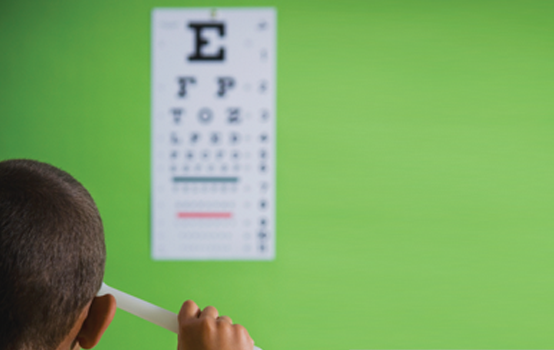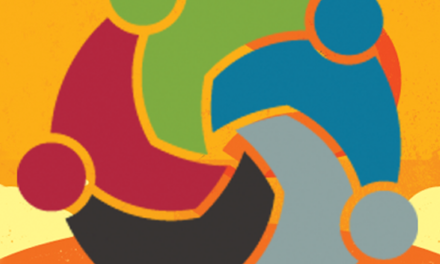
One student needs dental work. Another needs eyeglasses to see the blackboard. There’s the student who comes to school hungry and the student who is homeless. They all face challenges outside school that threaten their ability to achieve in school.
These problems are often the result of poverty, parental depression, or substance abuse. As numerous research studies point out, these factors can hurt students’ performance in school, making it hard to complete classwork or develop the social skills to achieve.
Community schools help students by connecting them to services. But at a group of community schools in the South Bronx run by the Children’s Aid Society, staff and educators have found they can be even more effective when they have a key ingredient: data.
The toughest facts about the Bronx are well-known. Poverty is widespread. From 2011 to 2015, 53% of the Bronx’s neighborhoods had high or extreme poverty, according to New York University’s Furman Center (Austensen et al., 2016). During the 2016-17 school year, 87% of public school students lived in poverty.
Parents’ concerns about their children’s education have made it into city newspapers. “A parent can’t focus on a child’s education when they don’t have food on the table,” Tracy Woodall, a single mom and activist who lives in the Bronx, told the New York Daily News. “This child could be a genius. But if this child is coming home to a house that has no heat, no lights, no food — then this child can’t learn” (Ryley et al., 2015).
The Children’s Aid Society (CAS), which had been grappling with poverty and its challenges for decades, launched its community schools initiative in 1992. Schools have been taking innovative steps to reach out to students: staying open in the evenings, serving as community centers, and bringing after-school programs or health services into school buildings to create easy access for students.
But CAS wanted to do more. Staff wanted to engage in more data-driven decision making and reached out to Boston College’s Lynch School of Education to learn about City Connects. Based at the Center for Optimized Student Support, City Connects helps schools set up an evidence-based program to assess and meet students’ needs so schools can provide students with the right resources at the right time. City Connects can be implemented in any school, including a community school.
At the heart of the City Connects model is a school site coordinator — typically a social worker or school counselor — who works with all of the teachers and staff in a school. The coordinator meets with every teacher to conduct a whole-class review that looks at each child’s strengths and challenges in four domains: academic, social-emotional, physical, and family. Teachers are able to share knowledge as well as telling details — e.g., a child is always late or wears soiled clothes — that may indicate bigger problems. Sometimes the process will identify a student with special talent and no opportunity to develop it.
“Teachers feel like they have support,” said Milagros Espaillat, the coordinator at P.S. 211 in the Bronx. “Because they have so many students, teachers sometimes feel that students can fall through the cracks.” The process gives teachers a holistic view of their students and how best to teach them.
Coordinators then address students’ nonschool problems, consulting closely with families to link them to school-based or community-based services that meet student and family needs. A key part of this work is developing and maintaining relationships with community partners such as the local Big Brothers Big Sisters of America, colleges whose students provide tutoring, mental health providers, cultural institutions, and a range of other organizations. As a result, students receive everything from school clothes and new eyeglasses to dental services and summer camp placements. The goal is to meet needs and provide enrichment.
Coordinators also enter the information they gather into the secure City Connects Student Support Information System (SSIS) that tracks student needs and service referrals and work being done by community partners. SSIS provides an efficient way to connect students to services. When a referral is entered, coordinators can easily access information about community agencies that offer the needed service, including the agency’s location, hours, and ages served. As coordinators look at information in the aggregate across their school, they can identify major trends in student needs as well as gaps in services. This analysis leads to service referrals.
In the particular case of P.S. 211, referrals led to 890 delivered services for students in the past school year.
City Connects helps schools set up an evidence-based program to assess and meet students’ needs so schools can provide students with the right resources at the right time.
Independent researchers analyzing City Connects across districts have found that the model raises scores on standardized state tests and report card grades (Walsh et al., 2014). The model also lowers chronic absenteeism and prevents dropouts (City Connects, 2014). Qualitative information gathered from coordinators and principals suggests that City Connects tightens the bond between schools and families. In the words of one New York City principal, “[With City Connects], we have a clear perspective on how we can impact or are impacting a family’s life.” And community partners say City Connects helps them find more of the children they seek to serve.
City Connects in the Bronx
The Children’s Aid Society took this model and launched it in 2014 at P.S. 61 in the Bronx, an elementary school where, in the 2013-14 school year, only 14% of students met state standards on the New York English test, far below New York City’s overall average of 30%. Only 22% of students met state standards on the state math test, compared to 39% citywide (New York City Department of Education, 2017).
City Connects coordinator Maria Panora worked with teachers to discuss both strengths and needs of each of the school’s 281 students. These in-depth conversations not only covered broad domains of strength and social, emotional, and behavioral needs but also attempted to understand these areas more deeply. For example, a student’s challenges with attention might mask a health problem, or a student struggling to form friendships might not have enough contact outside school with students who have common interests. This discussion leads to service referrals — such as a connection to a health facility or a sports team.
Across the students in Panora’s school in 2016-17, four major areas of support emerged as most needed: tutoring, social skills, counseling, and after-school enrichment.
Coordinators address students’ nonschool problems by consulting closely with families to link them to school-based or community-based services that meet student and family needs.
Responding to that information, the school set up a 12-week tutoring program that served students who were performing slightly below grade level. The assessment revealed that some students needed to improve their social skills, especially in the areas of peer interactions and anger management. That led the school to work with Boys & Girls Club of America and start two programs: Passport to Manhood and SMART Girls for students in grades 3 to 5.
The assessment also revealed that many students showed signs of depression and anxiety. Long waiting lists meant delays in accessing mental health services, so staff members have taken the training required to supervise social work students to add to the school’s counseling capacity.
Other data indicated that some students with a pervasive lack of self-confidence had strengths in the theater arts, which suggested an enrichment opportunity. A staff person was chosen to develop a new theater program that has been popular among students and runs during the day and in the after-school program.
The whole-class review also shed light on the specific challenges faced by many students who were recent immigrants so Panora started a newcomers’ group. “We thought it was important to work with this group of kids. We start with activities like making a family tree and that leads into group counseling,” Panora explained. “The kids talk about how they came to this country and their feelings about who is here and who’s not.” Sometimes one parent is in the United States and the other parent is back home. Research has shown that such group sessions result in a significant lessening of anxiety and depression for immigrant students (Park-Taylor, 2005).
Early results
Though the initial two years of collaboration between City Connects and Children’s Aid Society community schools suggest positive trends on achievement, further analyses of student-level data are needed to see whether students in these schools are experiencing long-term positive outcomes. However, past research has shown benefits for students across the public, charter, and parochial sectors (City Connects, 2016), leading schools to expand the model to serve more students. Fortunately, the data will continue to provide insights and help remove barriers that block students from achieving the school success that can carry them on to successful adult lives.
References
Austensen, M., Been, V., O’Regan, K.M., Rosoff, S., & Yager, J. (2016). State of New York City’s housing and neighborhoods, 2016 focus: Poverty in New York City. New York, NY: New York University, Furman Center.
City Connects. (2014). The impact of City Connects: Progress report 2014. Chestnut Hill, MA: Center for Optimized Student Support.
City Connects. (2016). The impact of City Connects: Student outcomes. Progress report 2016. Chestnut Hill, MA: Center for Optimized Student Support.
New York City Department of Education. (2017, April). Demographic snapshots: P.S. 61 Francisco Oller Elementary School quality snapshot. New York, NY: Author.
Park-Taylor, J. (2005). Toward the development and validation of the Children’s Acculturation Report (CAR). Unpublished doctoral dissertation. Boston College, Chestnut Hill, MA.
Ryley, S., Badia, E., Otis, G.A., & McShane, L. (2015, March 15). Parents in South Bronx school district, NYC’s worst, struggle to find promising options. New York Daily News.
Walsh, M.E., Madaus, G.F., Raczek, A.E., Dearing, E., Foley, C., An, C., Lee-St. John, T.J., & Beaton, A. (2014, August). A new model for student support in high-poverty urban elementary schools: Effects on elementary and middle school academic outcomes. American Educational Research Journal, 51 (4).
Originally published in February 2018 Phi Delta Kappan 99 (5), 44-46. © 2018 Phi Delta Kappa International. All rights reserved.
ABOUT THE AUTHOR

Alyssa Haywoode
ALYSSA HAYWOODE is a communications consultant, City Connects, Center for Optimized Student Support, Lynch School of Education, Boston College, Chestnut Hill, Mass.










